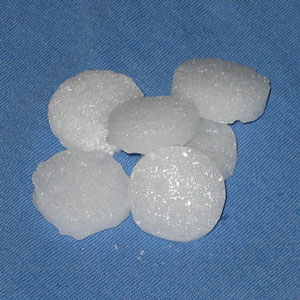Don’t Use Mothballs to Repel Nuisance Animals
By Chris Williams on July 23, 2013.
 We’ve said it before but it’s time to say it again—you cannot legally use mothballs as repellents for animals like mice, squirrels, raccoons, or snakes. There are plenty of do-it-yourself sites on the Internet that give directions for using mothballs (or moth flakes, crystals, or cakes) for this purpose. Even the popular eHow web site gives instructions for how to use mothballs to rid your home of fleas, snakes, mice, and rats by filling open plastic butter tubs ¾ full of mothballs and placing them around your home–all illegal and dangerous uses.
We’ve said it before but it’s time to say it again—you cannot legally use mothballs as repellents for animals like mice, squirrels, raccoons, or snakes. There are plenty of do-it-yourself sites on the Internet that give directions for using mothballs (or moth flakes, crystals, or cakes) for this purpose. Even the popular eHow web site gives instructions for how to use mothballs to rid your home of fleas, snakes, mice, and rats by filling open plastic butter tubs ¾ full of mothballs and placing them around your home–all illegal and dangerous uses.
Mothballs are Regulated Pesticides
Many people don’t even realize that mothballs are pesticides. They are pesticides that come in a solid form and then volatilize, slowly changing to a gas. When you smell mothballs, you are inhaling the pesticide. Because mothballs are pesticides, they are regulated by the Environmental Protection Agency and use of the products in any manner not in accordance with the product’s label is illegal. The labels do not allow their use as animal repellents.
Mothballs produced in the U.S. contain one of two active ingredient chemicals: naphthalene or paradichlorobenzene. Exposure to large quantities of either of these chemicals can lead to headaches, nausea, vomiting, diarrhea, or eye and nose irritation and coughing. People exposed to mothballs for an extended time can suffer more serious liver and kidney damage. Mothballs are also dangerous because they can be mistaken for candy or food and eaten by children or pets. One mothball can cause serious harm if eaten by a child. Placing them in open containers, as many web sites recommend, is asking for trouble.
Using mothballs outside to repel snakes or to keep animals out of gardens can harm children, pets, or other wildlife. Mothballs used outdoors can also harm the environment by contaminating soil, plants, and water.
Proper Use of Mothballs
Mothball labels direct you to use the product only inside tightly sealed containers where the fumes are contained. Mothballs should never be used in open containers or in a way that will allow the pesticide fumes to accumulate in living spaces where people and pets can breath them. If you use mothballs to repel clothes moths from woolens, use them carefully. They must be kept away from children and pets.
When mothballs are used inside airtight containers, as the label requires, the vapors released by the mothballs build up and kill, or at least repel, clothes moths. Many experts say that mothballs are really not very effective against clothes moths anyway. To work effectively, they have to be used in sufficient amounts and used in an airtight container; most people fail on both counts. Plastic tubs with tight lids are good choices for storing woolens and clothing.
If you have a nuisance animal problem in or around your home, your best bet is to contact a pest management company, like Colonial, that is licensed and experienced in nuisance wildlife control, including trapping and exclusion. Don’t risk your family’s health by trying to drive animals out with mothballs.